Step-by-Step Guide to Starting Tomatoes from Seed
Learn how to start tomatoes from seed with this step-by-step guide. Get tips on timing, soil, light, and transplanting success.
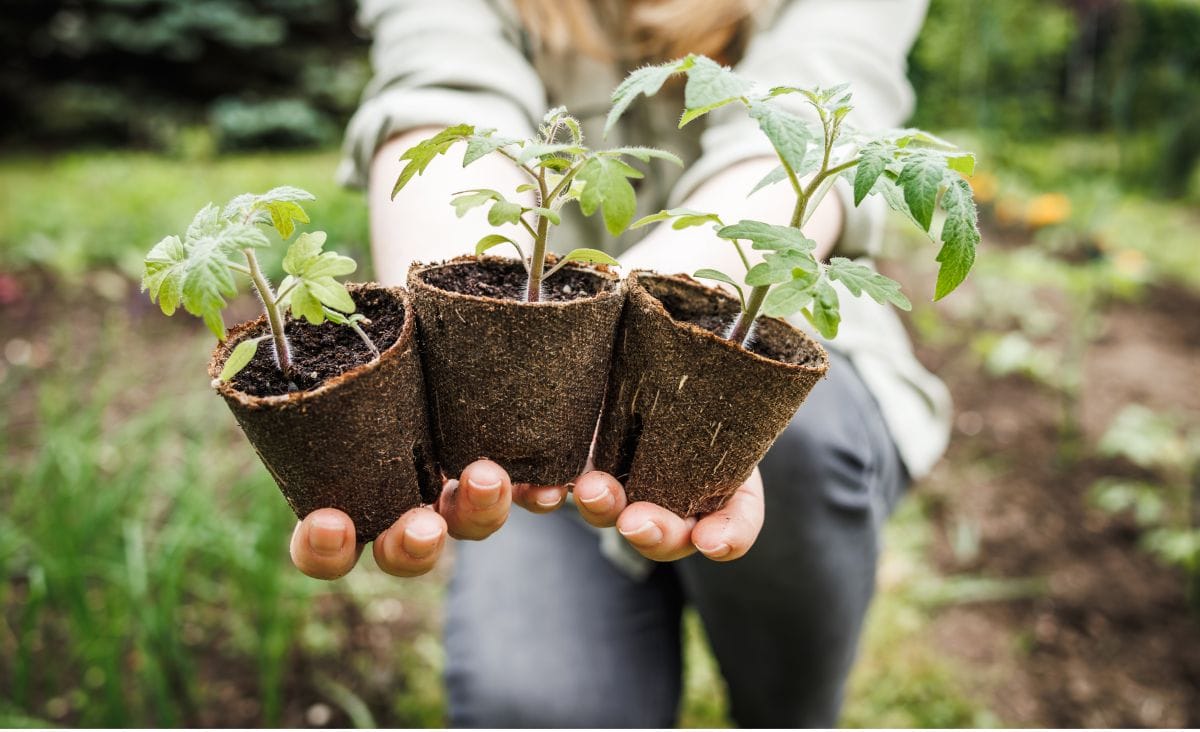
Starting tomatoes from seed is one of the most rewarding gardening experiences, but it can feel a bit intimidating if you’ve never done it before. I remember my first attempt—too much water, not enough light, and a whole lot of leggy seedlings. But once I figured out the basics, I never looked back.
In this guide, I’ll walk you through exactly how to start tomato seeds indoors successfully. From choosing the right seeds to providing the perfect growing conditions, you’ll be equipped with everything you need to grow healthy tomato plants ready for transplanting.
Step-by-Step Guide to Starting Tomato Seeds
Tomatoes are warm-season crops that thrive when given the right start. By starting your seeds indoors, you can get a head start on the growing season and enjoy an earlier harvest. Let’s break down the process step by step.
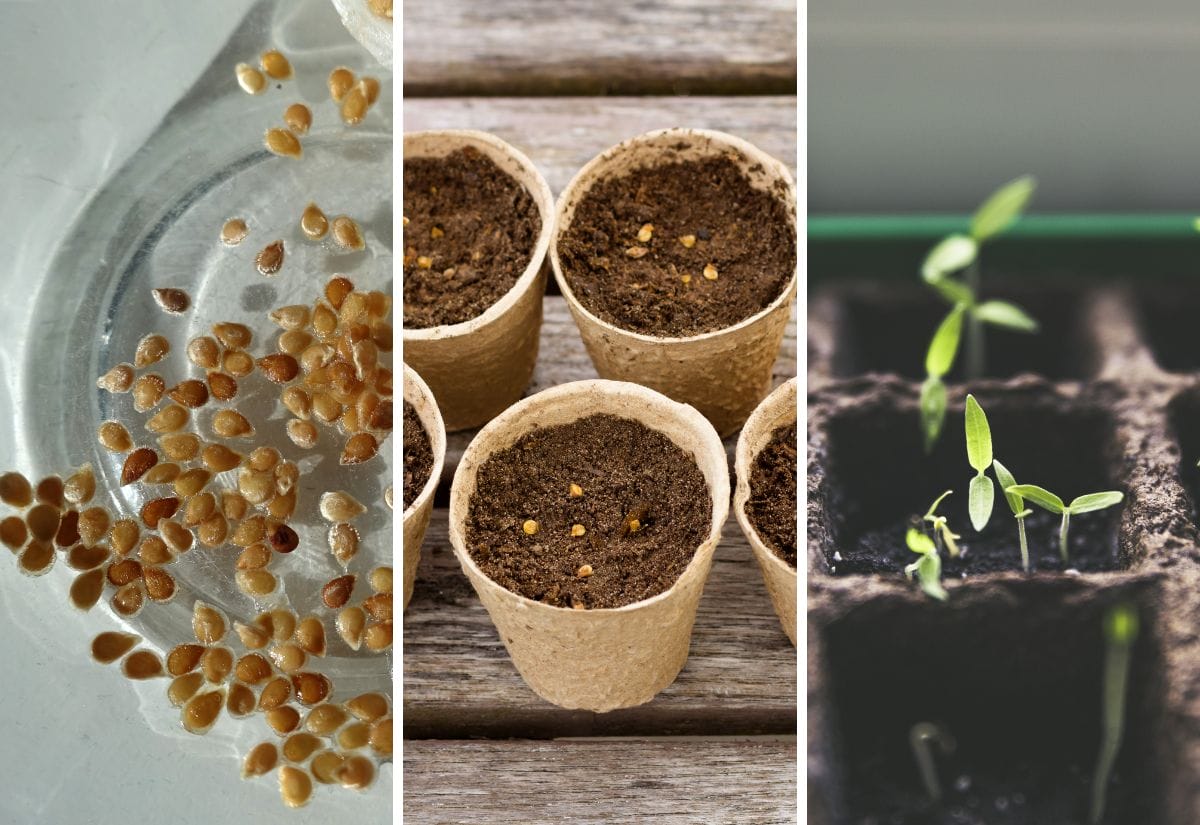
Choosing the Right Tomato Seeds
Before you plant, it’s important to pick the right tomato varieties based on your needs.
Determinate vs. Indeterminate
Determinate (bush) tomatoes grow to a set height and produce fruit all at once—great for canning.
Indeterminate (vining) tomatoes continue growing and producing all season—perfect for fresh eating.
Heirloom vs. Hybrid
Heirloom varieties offer unique flavors and saveable seeds, while hybrids often provide better disease resistance.
Tip: I love starting a mix of both to enjoy different harvest options throughout the summer.
When to Start Tomato Seeds Indoors
Timing is everything. Tomato seeds should be started indoors 6-8 weeks before your last expected frost date.
Check your local frost dates to plan accordingly.
Understanding your area’s frost dates helps ensure your tomato seedlings are ready to go outside at the right time. Planting too early can result in weak plants that struggle in the cold, while planting too late may delay your harvest.
Use a gardening calendar to stay on track with sowing and transplanting dates.
A gardening calendar helps you organize key planting tasks, track important milestones, and prevent missed windows for starting seeds or transplanting. Many gardening apps also offer reminders to keep you on schedule.
Gathering Supplies
You’ll need a few basic supplies to get started:
- Seed trays or small containers (make sure they have drainage holes)
- Seed-starting mix (light and well-draining)
- A spray bottle (for gentle watering)
- Grow lights or a sunny window (tomatoes need plenty of light)
- Heating mat (optional but helpful for consistent warmth)
I prefer using biodegradable seed-starting pots because they make transplanting easier and reduce root disturbance.
Planting Your Tomato Seeds
- Fill your containers with moist seed-starting mix. You want the soil to be damp, but not soaked.
- Plant tomato seeds about 1/4 inch deep by making small holes in the soil and placing 1-2 seeds per cell.
- Lightly cover with soil and gently mist with water to settle the soil without compacting it.
- Place the trays in a warm spot (70-80°F is ideal), such as near a heat source or on a heating mat to maintain consistent warmth.
Tip: Cover your trays with a humidity dome to retain moisture until seeds germinate.
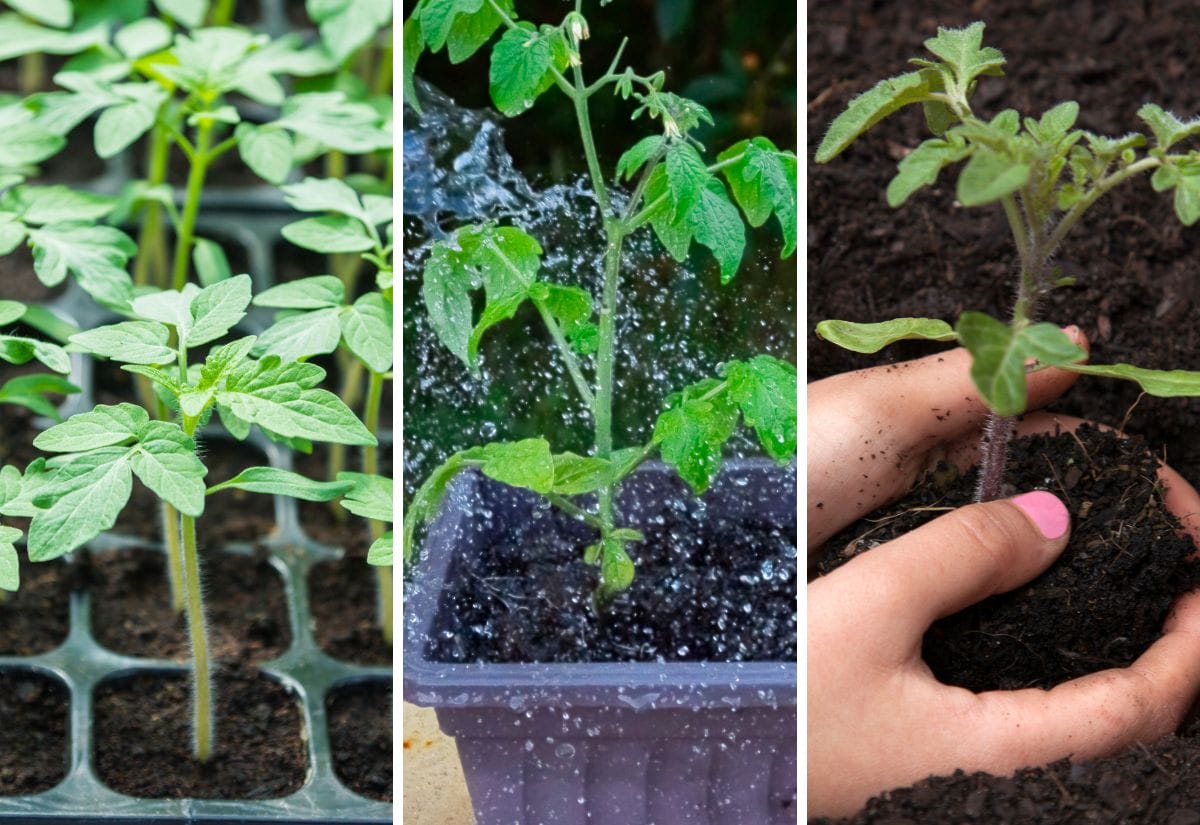
Providing the Right Growing Conditions
Tomato seeds need three key things to germinate and grow strong: warmth, moisture, and light.
Heat and Moisture
- Keep the soil temperature between 70-80°F using a heating mat if necessary.
- Water gently when the top of the soil feels dry—too much water can cause damping off.
Light Requirements
- Once seeds sprout, move them under grow lights or place them in a bright, sunny window.
- Provide 14-16 hours of light daily to prevent leggy growth.
I learned the hard way that relying on a window alone isn’t enough—grow lights make all the difference.
Caring for Young Tomato Seedlings
Once your seedlings emerge, they’ll need regular care to grow strong and healthy.
Thinning
When seedlings have two sets of leaves, thin them out to avoid overcrowding by snipping the weaker seedlings at the soil line, leaving the strongest plant in each cell or container. Aim to leave about 2-3 inches of space between seedlings to ensure they have enough room to grow without competing for nutrients and light.
Air Circulation
Using a small fan helps promote strong, sturdy stems by simulating natural wind conditions and encouraging the plants to grow stronger. It also improves air circulation around the seedlings, reducing the risk of mold and fungal diseases that thrive in stagnant, humid environments.
Fertilizing
Once true leaves appear—those first sets of leaves that resemble mature tomato foliage rather than the initial rounded seed leaves—it’s time to start feeding your seedlings. Use a diluted liquid fertilizer, such as a balanced 10-10-10 formula or a fish emulsion, every 10-14 days to promote healthy growth and strong root development.
Transplanting Tomato Seedlings Outdoors
When your seedlings are about 6-8 inches tall and have several sets of leaves, it’s time to prepare them for life outdoors.
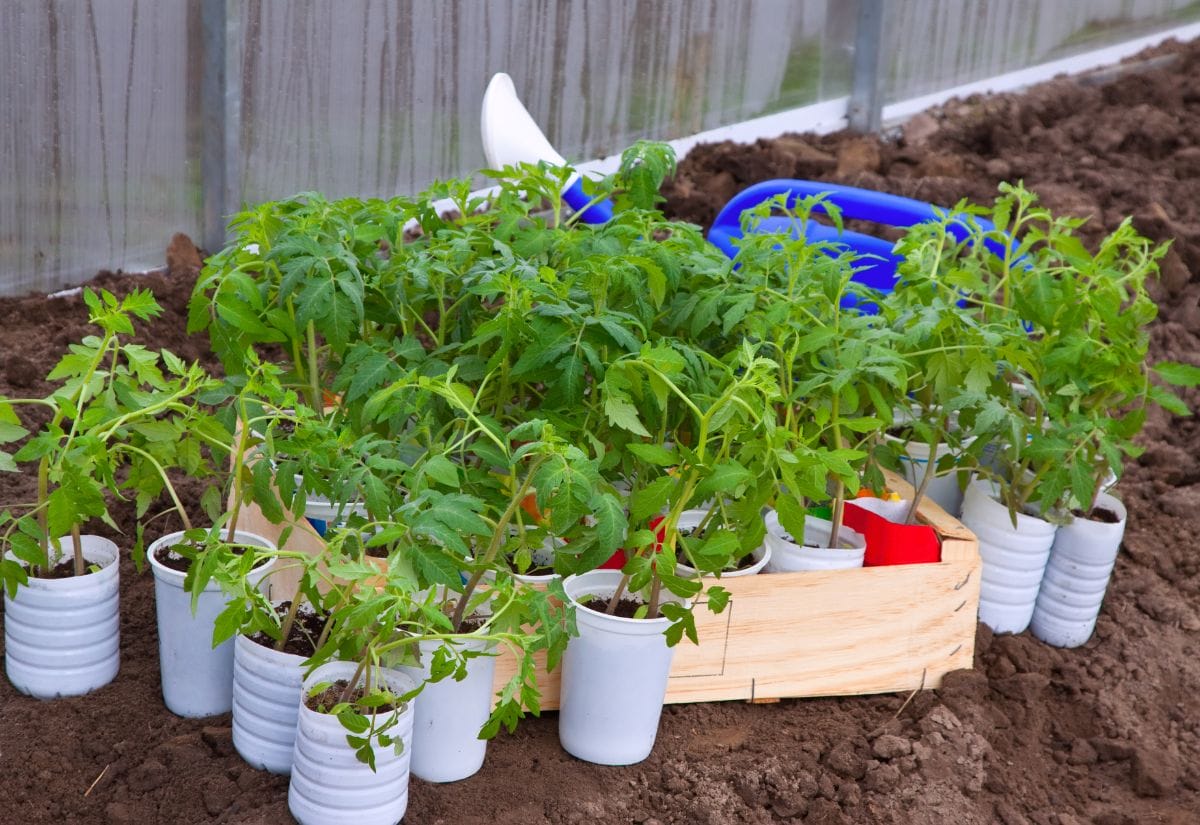
Hardening Off
Start by placing your tomato seedlings outside in a shaded, protected area for a few hours each day, gradually increasing their exposure to sunlight and outdoor temperatures over 7-10 days. Begin with shorter periods and slowly work up to full-day exposure to prevent shock.
Be mindful of sudden temperature drops or strong winds, and bring seedlings indoors if conditions become too harsh.
Soil Prep
Tomatoes love nutrient-rich, well-draining soil with plenty of compost. Start by loosening the soil to at least 12 inches deep, incorporating well-aged compost or organic matter to improve fertility and drainage. Test the soil pH to ensure it falls between 6.0-6.8, which is ideal for tomato growth.
Adding a balanced fertilizer rich in phosphorus can promote strong root development.
Planting
Dig deep holes, about 8-12 inches, and bury seedlings up to their first set of true leaves to encourage strong root development. This technique allows the stem to produce additional roots, leading to a more resilient plant. Make sure to gently firm the soil around the base and water thoroughly to help settle the roots.
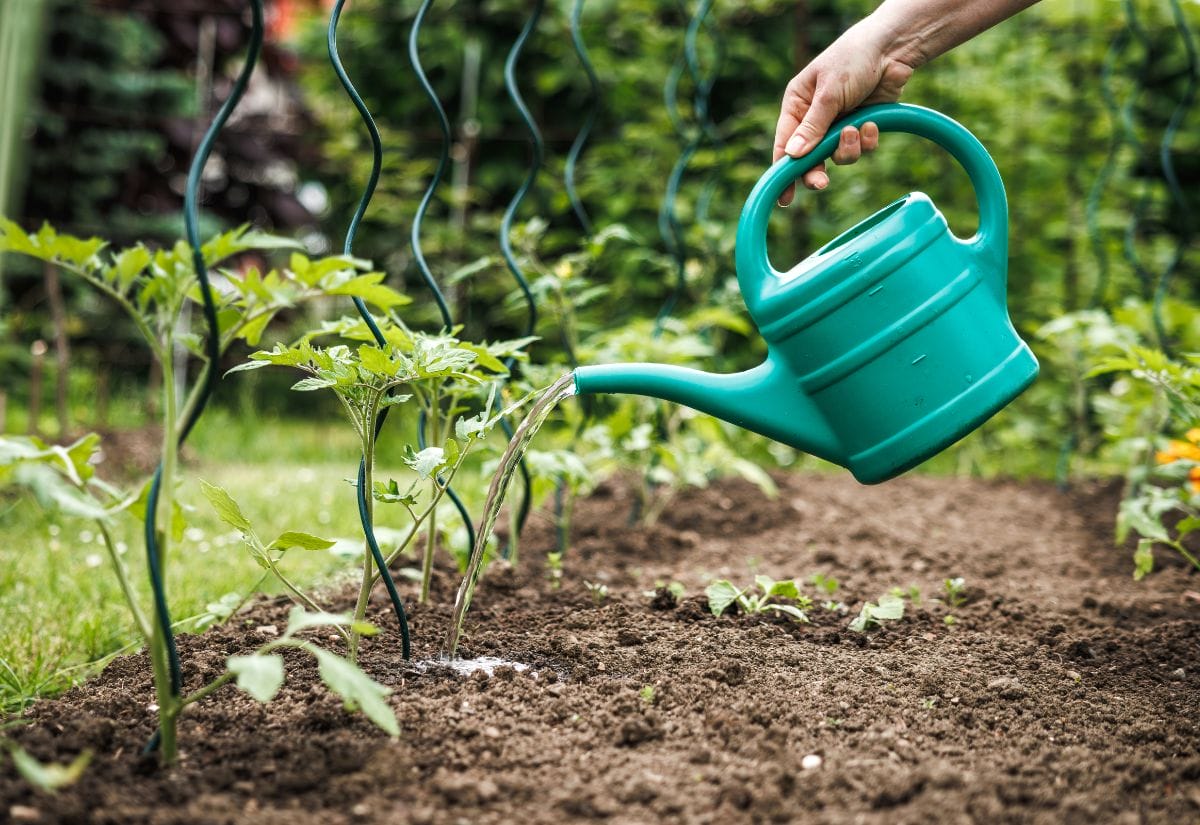
Troubleshooting Tomato Seed Starting
Tips for Growing Tomatoes from Seed
If you’re looking to boost your success rate, consider these tips:
- Pre-soak your seeds for a few hours before planting to speed up germination.
- Label your varieties to keep track of different types and their needs.
- Consider bottom watering to prevent disturbing delicate seedlings.
If starting seeds indoors isn’t an option, you can try winter sowing in milk jugs or direct seeding in warmer climates.
Pin now and grow delicious tomatoes from seed!
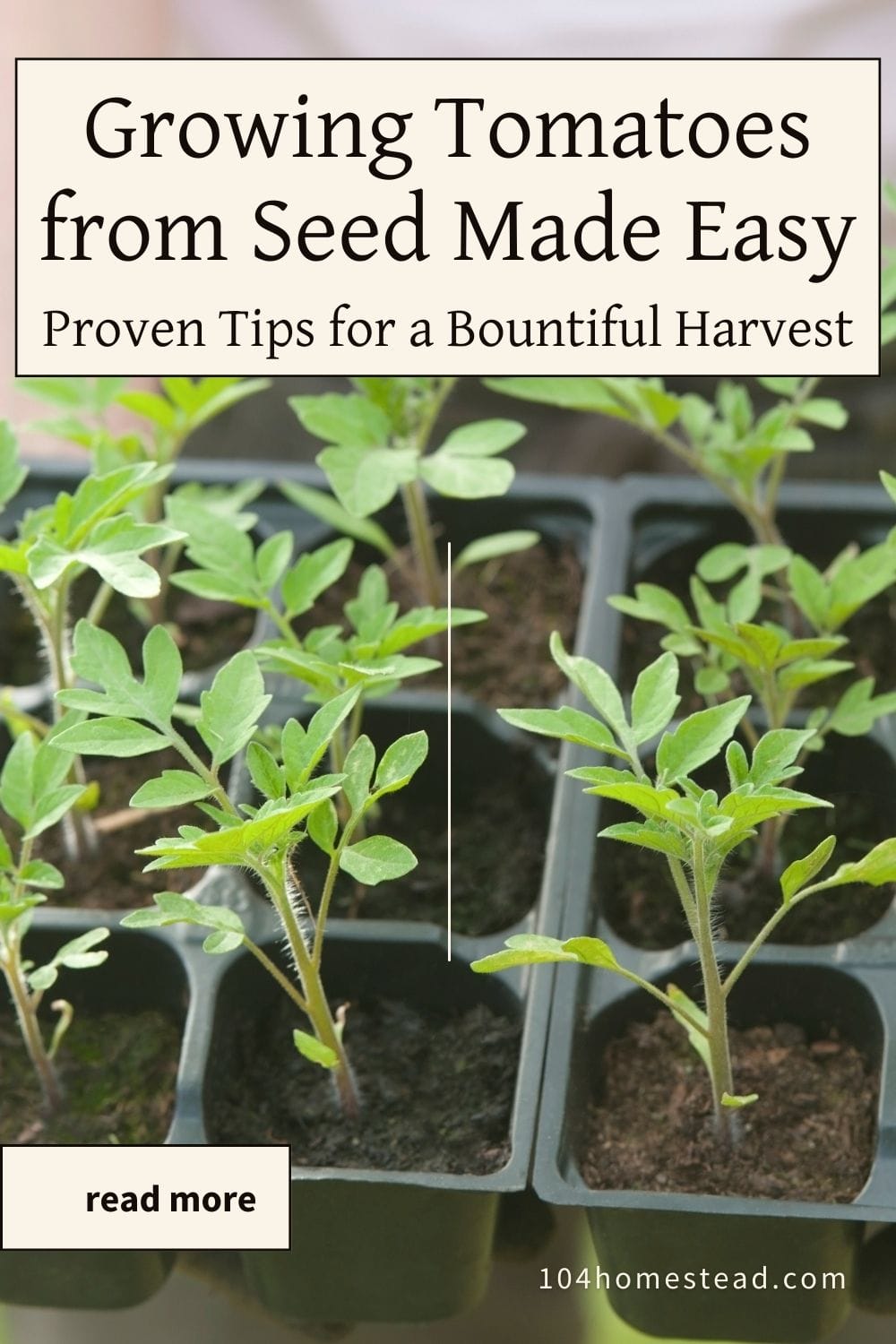
Starting tomatoes from seed is a rewarding way to grow a bountiful harvest, and with the right conditions, you’ll be well on your way to strong, healthy plants. Whether you’re growing your first batch or improving your technique, mastering the basics of light, moisture, and timing will set you up for success.
Once your tomato seedlings are thriving, the next steps are just as important to ensure a successful harvest. Learning how to properly transition your plants to the outdoors can make all the difference, and knowing when and how to remove suckers can help you maximize your yield. As your plants grow, understanding the best practices for nurturing them into lush, productive vines will keep them healthy all season long. And when it’s finally time to enjoy the fruits of your labor, you’ll want to know exactly when to harvest and how to preserve your tomatoes for months to come.
Have you tried growing tomatoes from seed? Share your experiences and tips in the comments below!




